Harry Carpenter '18 (right) and Rishav Sharma '18 (left) test their genre-defying interactive experience using motion controls. Photo by Peter Bailley '74
It’s the first Saturday of the term, and some students have gathered to play board games and eat pizza. But they’re not taking a study break. The board games bring moments of intense anticipation, excitement, and frustration—emotions that students will learn to evoke as game designers over the next 10 weeks in CS 295R: Interactive Design.
The innovative course is equal parts serious academic inquiry and highly technical training. The schedule is crammed with hours of after-class group work expected just about every day—some of which involves playing games, yes, but also market research, drafting, coding, and more. Billy Nguyen ‘20 is one of many who confesses: “I didn’t expect it to be this much work!”
Nguyen is assigned to one of seven small teams assembled by the course’s four professors. The teams bring together students from various backgrounds, including computer science, studio art, and creative writing. Hand-picking the teams serves two purposes: to distribute competencies across the classroom and to challenge students to collaborate with individuals with different interests.
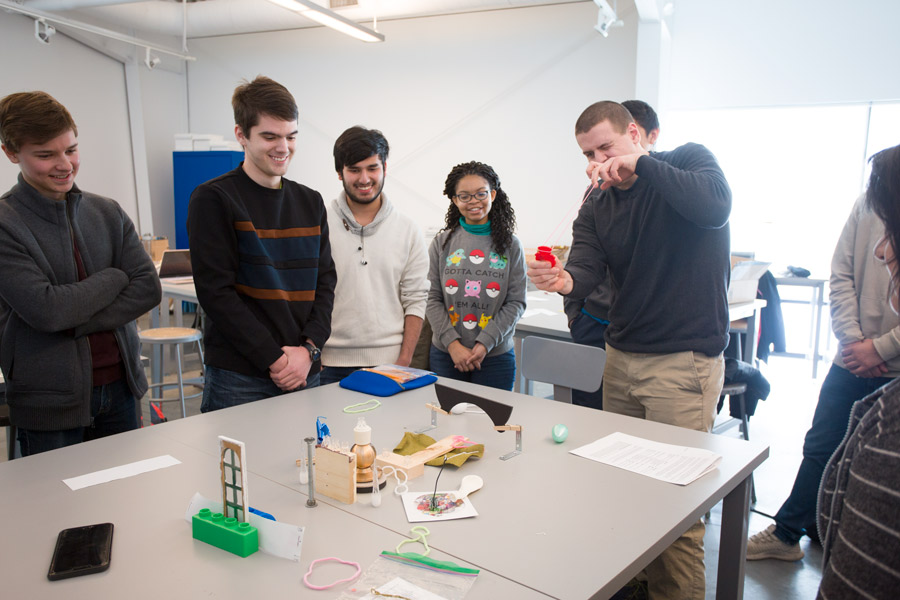
Early on, the teams are given an adverb and a color scheme—like “bashful” and “green,” or “egregious” and “split-commentary.” With only those two directives for inspiration (and limitation), each team creates a game or other interactive experience by the end of the term.
The concept for Interactive Design began nearly three years ago in conversations between Associate Professor of Computer Science Jaime Spacco and Visiting Assistant Professor of Art Tim Stedman '09. They seem like an unlikely duo at first: Stedman’s experience spans marketing, music, and award-winning album recording packages, while Spacco’s involves grants for curriculum development and publications on a variety of computer science topics. But the two share an appreciation for the creative process, which is something they focused on in their last collaboration: the interdisciplinary entrepreneurship experience StartUp Term.
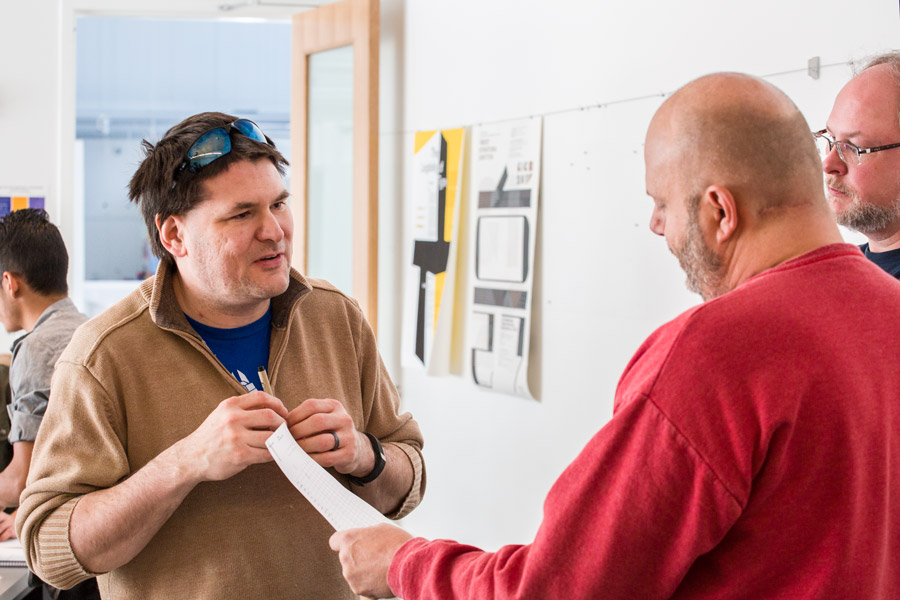
Spacco and Stedman brought in two more faculty—Associate Professor of Theatre Craig Choma ’93 and Associate Professor of Computer Science Monica McGill. The two offer unique design sensibilities: Choma has spent years on sets, lights, and audio design in professional theatrical productions, and McGill has led the development of educational games and mobile apps in the healthcare industry.
Knox students also expressed interest in exploring the topic of game design. Nola Thompson ’18 says, “I’ve had this class tentatively penciled into my schedule for the past two years.” Thompson began taking design courses her sophomore year. She first heard about faculty plans for the class at a “Game Jam” event hosted by Choma, Spacco, and Stedman in 2016.
The timeline for Interactive Design is certainly challenging: students have fewer than 10 weeks to design documents, create prototypes, review user testing, and present their game. Along the way, they learn principles of project management, and several of them spend countless hours troubleshooting code in the game development platform Unity.
The course lays the foundations for advanced work in visual thinking, storytelling, and process control—key elements of success in a wide variety of careers.
Before all that, however, they have to start with the basics of visual and emotional communication.
Attack of the Birds
“I want you to focus on the feeling right now, not the accuracy of detail.”
Stedman oversees an elementary practice in visual design as proposed by children’s book illustrator Molly Bang. The task seems simple at first: cut simple shapes in four colors and arrange a scene of “birds attacking a victim.”
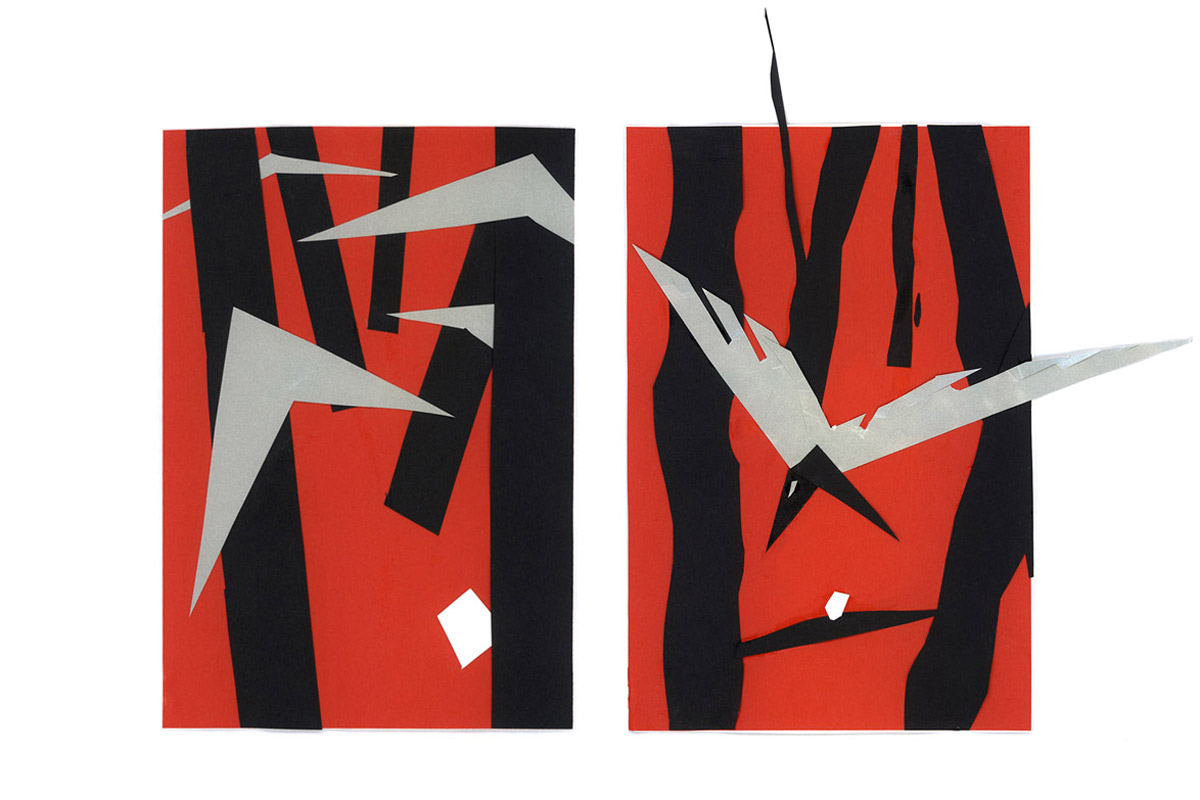
Immediately, there are different approaches. Some students focus on size and shape, making the birds large and pointy, the victim rounded and small. Others play more with perspective, or with color and composition. After a classroom critique, they each create a revised version.
“
Do not worry about whether the picture is pretty. Worry about whether it is effective.
What Stedman advises goes well beyond aesthetics: Students must learn to strip away distractions and focus on eliciting a reaction from their audience. In the words of Molly Bang, “Do not worry about whether the picture is pretty. Worry about whether it is effective.”
“How do we create emotion? How do we create a theme?” For Choma, these questions come before game mechanics. Having students consider the context of ideas like “attack” or “fear” reveals their thought process and tests their persuasiveness. “If I make this choice, what is the effect on the story?” says Choma. “When you’re creating an experience that is meaningful, every choice is important.”
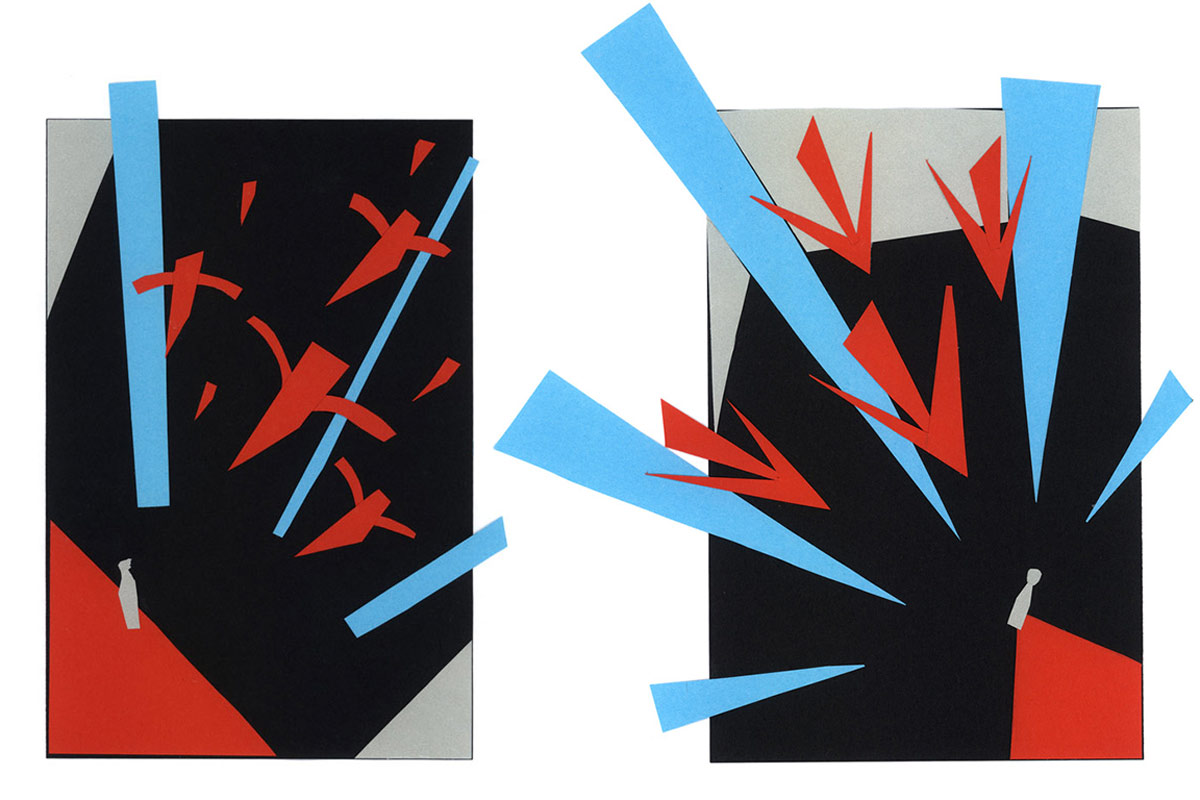
Growing Pains
“You’re hurting the letters.”
It’s time to go over design plans, and each team has assembled a “moodboard.” The document serves to preview each team’s project, with colors and characters, objectives, and target audiences.
In this particular case, a team has stretched a font vertically, making it hard to read and slightly unnerving. Stedman does not find the result convincing. Was there a better choice to be made?
As students present, they can’t hide behind ambiguity or inexperience. They’ll be judged exactly for what they show. Choma reminds them, “Whether or not you intend [the audience] to read [the moodboard] a certain way, they will expect it to reflect the game.”
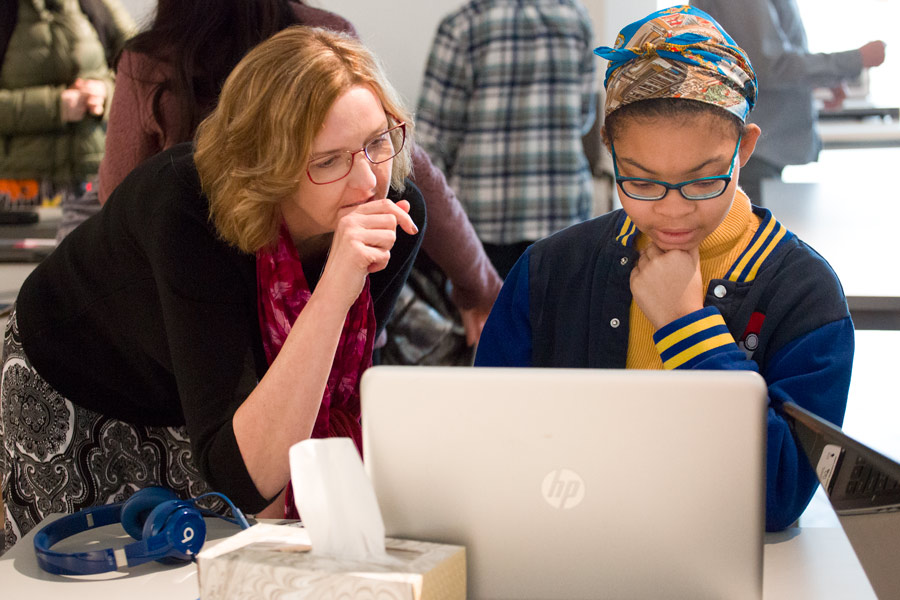
Learning critique also means acclimating to feedback that can sound harsh at first. For Stedman, it’s an act of generosity that “I’m telling you what I see [in your work].” No team is expected to be perfect—all they need is an openness to feedback and a mindset for growth.
As the class goes on, Choma, McGill, and Stedman spend more time facilitating critique between the various teams. “I look for opportunities with students to pull them into a space where they can act as teachers for each other,” says Stedman.
Computer science major Logan Ayers ‘18 finds that many of the lessons he learned in StartUp Term were reinforced here: “Communication is absolutely necessary at every step of the way, but there can definitely be too much. You have to strike a balance.”
What’s really surprising is that the professors are facing some of the same challenges that their students are up against. A course taught with four professors requires a new level of interdisciplinary coordination. Stedman says, “We’re really doing the same things that [the students] are doing ... We’re here collaborating, and we didn’t really know each other.”
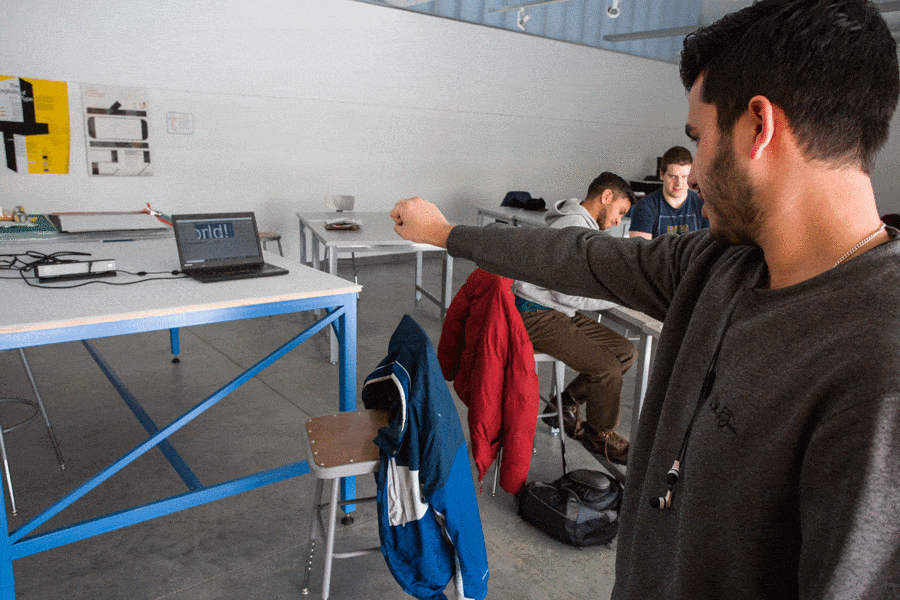
Making It Work
Seven teams, seven products. Some feel familiar, like platformers (the genre of Mario and Sonic) and puzzle games. Others are less traditional: There’s an interactive visual novel, a mobile game that counts your steps and gamifies everyday fitness, and a genre-defying experience that uses Microsoft Kinect to track the movements of the player.
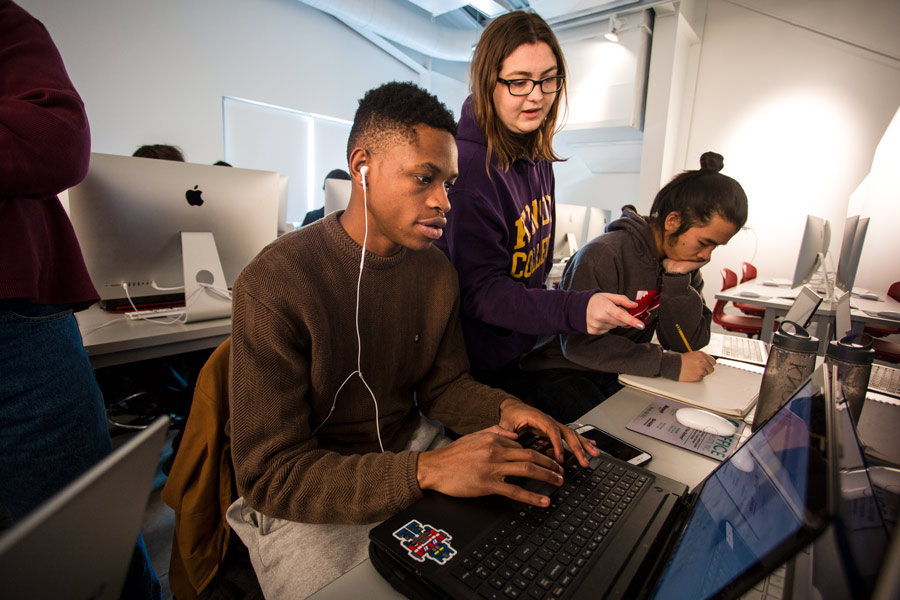
It’s hard not to fall in love with each one—imperfections and all. Madison Belka ’17 serves as teaching assistant for the class’s more coding-intensive portions, and has been aiding in each team’s progress since day one. “The little impressions that give you a sense of each student who worked on it has been the most fun and surprising part of the class.”
The games have been through many iterations: from concept to prototype, to user testing and final submission. It’s clear from the testing session that there are still more improvements to be made. But students have developed the language—and the desire—for critical feedback. When Thompson’s puzzle game was deemed too easy, she polled the audience immediately for solutions. Designing for an audience brings on a lot of pressure, but by drawing on the collective expertise of the class, each student is able to transcend their individual limitations and biases.
Something Old, Something New
Over the course of the term, each student has polished existing skills and acquired novel ones.
For Thompson, the class has allowed her to improve in Adobe Illustrator (one of the top tools in the field of professional design), while also providing a new challenge in designing a robust user interface. Ayers says that he expanded his programming knowledge while picking up a cognizance of how to make a story consistent and what tools professional studios use to produce their games.
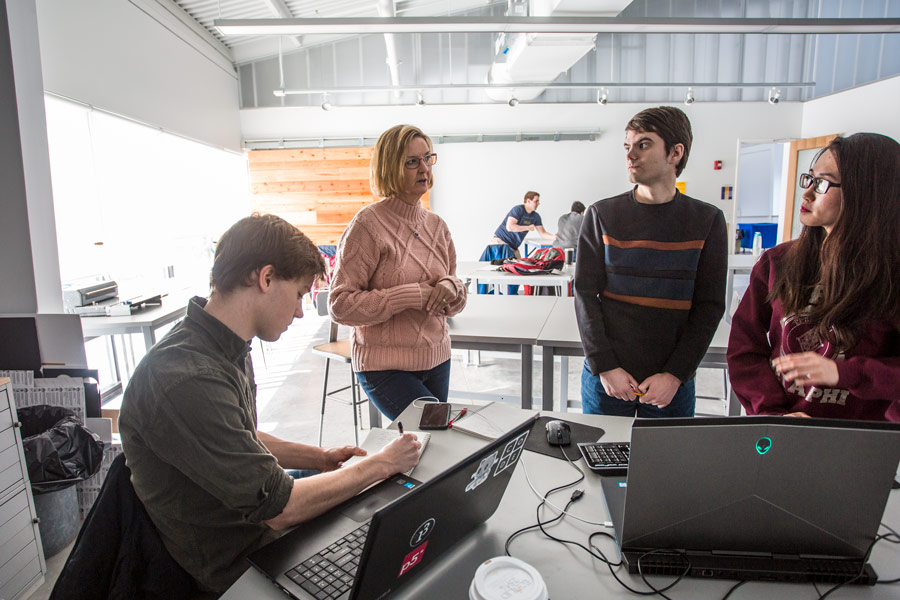
For all students, visual literacy is a key takeaway.
“What I teach in terms of basic visual skills could really help anybody in the world, because we live in a visual world,” says Stedman.
In a class this intensely interdisciplinary, professors broaden their own skill sets as well. Stedman takes cues from the software development world, noting how certain methods could be applied to art courses. And McGill, a veteran in video game development, says that she has become rather used to having design-oriented students around, noting their "appreciation for clearness” in evaluating the usability of their projects.
The Spirit of the Liberal Arts
“
It's a perfect illustration of what we're hoping for around here: interdisciplinary and diverse.
Tim Stedman '09
Interactive Design is an experiment in teaching, but it feels like a natural progression of inquiry: Spacco’s students were interested in design, and Stedman’s students were interested in technology.
According to McGill, this is no coincidence. “It reflects what's out in the industry: the marriage of designers and developers. You have to have design to make people want to use your product, and the technical capabilities [to realize the product].”
Students are already excited about what’s next. Nguyen and Ayers say they are “definitely interested in taking a course like this again.” Ayers wants to see classes focused on case studies of games, or on game mechanics and architecture.
Thompson adds that she would love to see more interdisciplinary design projects. “I might be interested in seeing it as a sequence, or something like Repertory Theatre Term, where you could really focus on just this.”
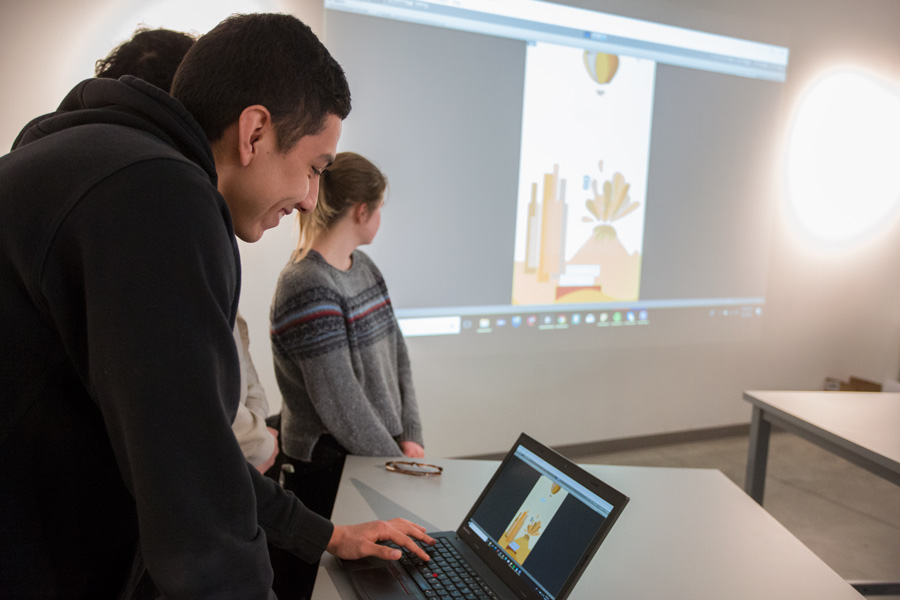
Regardless of what the course may inspire, Stedman wants to keep things grounded: Sure, you might never play any of these games, but that’s not the point.
“It's really about process, at the core of it. People are always anxious to see the outcome, or what you make, and, of course, that's always fun. But I do try to remind ourselves that it's an academic pursuit; you're here to learn. What's at the core is the process that you go through: You start here with nothing, and you build upon it.”